
|
xTuple ERP Reference Guide |
Miscellaneous vouchers can be used to authorize payments for non-inventory goods or services. You might use a miscellaneous voucher, for example, to authorize payment for utility bills or other non-inventory expenses. To enter a miscellaneous voucher, go to . The following screen will appear:
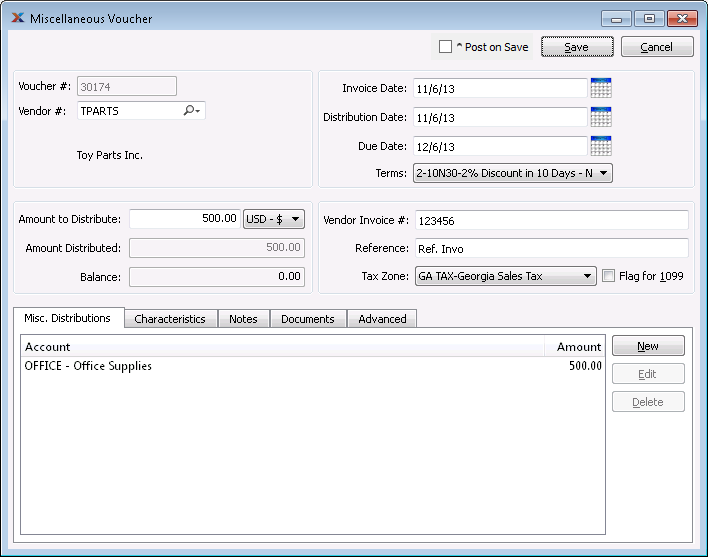
A voucher posts to the general ledger effective on the invoice date entered on the voucher—not on the date it is posted, as might be assumed.
When entering a new voucher, you are presented with the following options:
Next available voucher number will automatically display, unless your system requires you to enter voucher numbers manually. Default values and input parameters for voucher numbers are configurable at the system level.
Enter the vendor number of the vendor you want to enter a miscellaneous voucher for.
Specify the dollar amount you intend to distribute to the vendor for the miscellaneous voucher.
Displays sum of all miscellaneous distributions for the miscellaneous voucher.
Displays the difference between amount to distribute and amount distributed.
Enter an invoice date for the voucher. The invoice date is used for determining the due date, based on the specified terms.
Enter the date of the current distribution. When the voucher is posted, this is the date when the posting will be recorded in the general ledger.
Enter the date payment is due to the vendor. The due date is derived when the specified terms are added to the invoice date.
Specify the billing terms for the voucher.
Enter the vendor invoice number associated with the miscellaneous voucher.
Use this field to enter any notation or reference required for further identification.
Displays the tax zone associated with the specified vendor.
Select to flag transaction for form 1099 tax reporting. This is informational only and does not impact tax calculations.
Display lists miscellaneous cost distributions related to the miscellaneous voucher.
Select if you want to post the voucher automatically as soon as you hit the button. If not selected, the voucher will need to be posted in another step. This option is sticky, meaning the screen will remember your choice the next time you create a voucher.
Miscellaneous voucher characteristics are user-defined definitions which may be used to provide additional layers of description about a miscellaneous voucher. These descriptions are static and not processed by the system, but are useful for informational purposes. To enter characteristics associated with a miscellaneous voucher, select the tab. The following screen will appear:
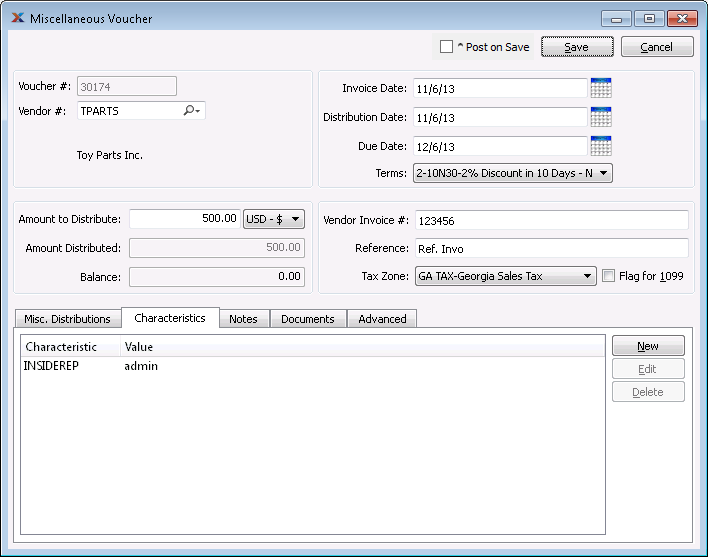
Miscellaneous Voucher Characteristics
When creating a new miscellaneous voucher characteristic, you are presented with the following options:
Select a characteristic from the list of characteristics designated as being available for use as miscellaneous voucher characteristics.
Enter a description for the miscellaneous voucher characteristic.
To add notes to a miscellaneous voucher, select the tab. The following screen will appear:

When adding notes to a miscellaneous voucher, you are presented with the following options:
This is a scrolling text field with word-wrapping for entering general notes related to the sales order. These notes are for internal use only.
To associate documents with a miscellaneous voucher, select the tab. The following screen will be displayed:
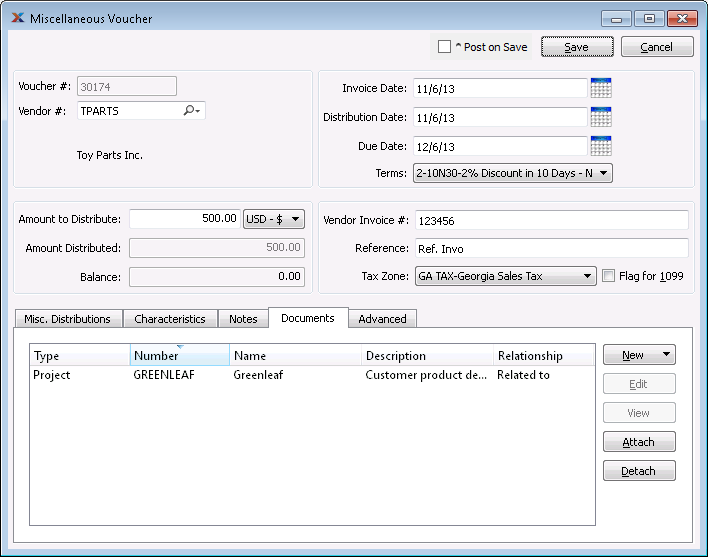
When associating documents, you are presented with the following options:
Select to create a new document and associate it with the current record. You may create the following document types:
Select to create a new image association.
Select to create a new fixed asset association.
Select to create a new maintenance order association.
Select to create a new incident and associate it.
Select to create a new project and associate it.
Select to create a new opportunity and associate it.
Select to create a new to-do and associate it.
Enables you to edit associated documents. The Edit screen is the same as that for creating a new document—except that when editing, the fields will contain document information. Double-clicking on a document will also bring you to the editing screen.
Highlight a document and then select this button to reach a read-only view of the Edit screen.
Select to associate already-existing documents. The following document types may be attached: contact, account, customer, employee, file, image, incident, item, opportunity, project, purchase order, sales order, vendor, web site, work order.
Highlight a document and then select this button to remove the association.
To associate already-existing documents, select the button. The following screen will appear:
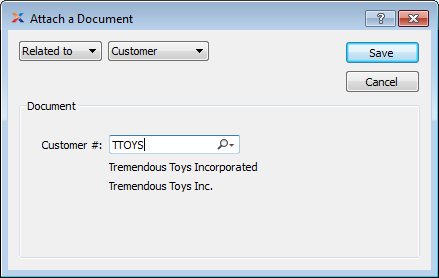
When associating already-existing documents, you are presented with the following options:
Indicate how the document is related to the current record. The following relationship options are available: related to, parent of, child of, duplicate of.
Specify the kind of document you want to associate. The following document types may be attached: contact, account, customer, employee, file, image, incident, item, opportunity, project, purchase order, sales order, vendor, web site, work order. When associating files, you will also be given the option to save the file to the database.
There is no file size restriction when saving files to the database. However, excessively large files could cause storage and performance issues.
Use the lookup tool to identify the specific document you want to attach. The data entry options will vary depending on the document type you select.
To create recurring vouchers, select the tab. The following screen will appear:
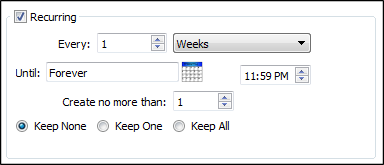
When creating a recurring event, you are presented with the following options:
Check this box if you want the event to repeat itself at regular intervals, using the frequency settings you specify below. Recurring events are generated when you run the Recurring Items utility, which is described in more detail here: Section 9.2, “Create Recurring Items”.
Enter a number and select a unit of time to describe how frequently you want the event to occur. You can choose any regular schedule, ranging from once every 1 minute to once every 99 years.
Enter a date and time at which to start the first event. The default value is the time the screen opened. The From option only appears on some screens.
Enter a date and time after which the event should no longer occur.
Enter the maximum number of future copies of this event you want the system to maintain. Whenever the Create Recurring Items screen is run, it will create up to the number you enter here.
If you delete all copies of a recurring event, the event will stop repeating even if the until date has not yet been reached. xTuple recommends setting this to at least 2 to reduce the likelihood of deleting all copies of the event.
Select to make the next job catch up if work was missed.
Select to create one catch-up job if work was missed.
Select to create any missed jobs.